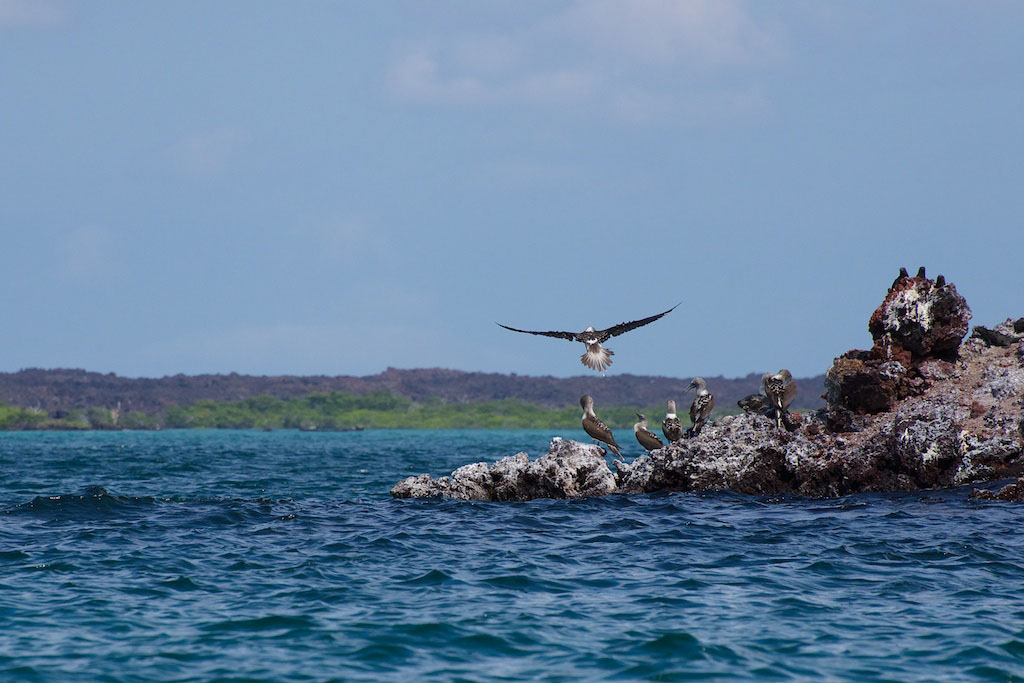8 days – Northwest Islands
Day by day
Baltra Island
On arrival at Baltra Airport all visitors pay their entrance fee to the Galapagos National Park, pass through immigration control, purchase their bus tickets, claim their checked pieces and get their hand luggage checked by the Galápagos Biosecurity Agency (ABG also known as our Quarantine system). The Samba’s naturalist guide will assist you with as you come out of the terminal and accompany on a short bus ride to the harbor to board the Samba. Lunch will be served around 12:30.
Mosquera Islet
After a light lunch the Samba will navigate for 45 minutes to Mosquera. Imagine a beach rising from the ocean floor in the middle of nowhere. Imagine sand grains as soft as sugar. Now imagine a sea lion colony and a fabulous sunset. You are here! Mosquera Islet is by far the best beginning of a Galápagos journey. This volcanic uplift dates from 100 thousand years ago is a geological treasure for an admirable start. On the shore is easy to encounter Galápagos sea lions, sally light foot crabs and shore birds.
Darwin Bay
After 6 to 7 hours of navigation from Santa Cruz you will wake up to the beautiful cacophony of one of the largest tropical sea bird colony of the planet. The cliff tops are decorated with frigate birds, red-footed boobies, Nazca boobies, swallow tailed gulls, tropic birds and many other pelagic animals. Darwin Bay is the home of many nesting sea birds. Following a wet landing and with the early morning light you will blend in with the red-footed boobies displaying for potential mates as they collect nesting material. The great frigate birds inflate their gulag sacks hoping to attract a female while others play their favorite game: piracy. Darwin’s finches, Galapagos doves and mocking birds stroll the ground to find seeds and insects. The red mangroves, cactus and saltbushes contrast with the blue sky and the dark basaltic walls.
Prince Philip’s Steps
Following lunch you will do a dry landing to climb Prince Philip’s Steps. The steep ascend takes you 100 feet above sea level, to be welcomed by the elegant silhouette of red billed tropic bird and the aerobatic Galapagos shearwater, both interact with the precipice on fast approaches. The lava rock trail takes through the endemic dwarf incense tree forest, to find more red footed “lancers” nesting and many of their gannet like relatives, the Nazcas, loudly claiming the floor as their residence. The Palo Santo forest is dormant most of the year, to awaken in the rainy season and contaminate the air with a refreshing aroma. As you exit the latent trees your breath may cease by the panorama of thousands of storm petrels flying erratically beyond the lava flows. This is the perfect scenario for the island predator to make a successful kill. The short-eared owl, known elsewhere around the world as a nocturnal predator, in Genovesa hunts in bright daylight. More cat than owl, waits patiently outside lava tunnels and crevasses to capture the stormy petrels as they leave their houses after feeding their young.
Snorkeling on Tower offers a view of a wide variety of tropical fish.
Map


